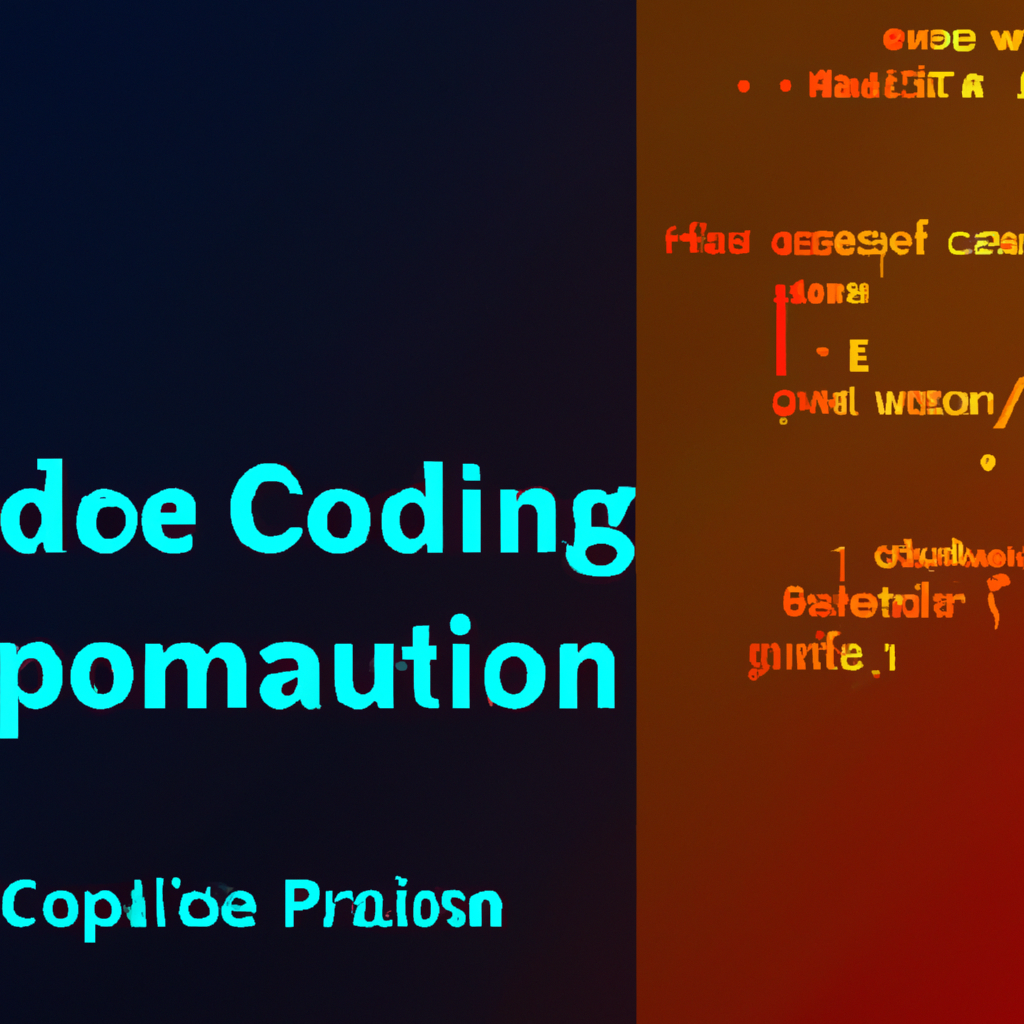The Importance of Code Optimization in HighPerformance Computing
Table of Contents
Title: The Importance of Code Optimization in High-Performance Computing
# Introduction
In the realm of high-performance computing (HPC), where vast amounts of data need to be processed in the shortest possible time, code optimization plays a critical role. With the ever-increasing demand for faster and more efficient computations, understanding the importance of code optimization becomes imperative for researchers and developers in the field of computer science. This article explores the significance of code optimization in high-performance computing and highlights both the new trends and classic techniques that contribute to achieving optimal performance in computational algorithms.
# Understanding Code Optimization
Code optimization refers to the process of enhancing the efficiency of a program by minimizing its resource consumption while maximizing its performance. In high-performance computing, where complex algorithms and massive datasets are often involved, code optimization becomes crucial to unleash the full potential of computational systems. Effective code optimization can result in reduced execution time, improved scalability, and enhanced overall system performance.
# The Key Principles of Code Optimization
Algorithmic Efficiency: The foundation of code optimization lies in designing and implementing efficient algorithms. By selecting algorithms with lower time and space complexities, researchers can significantly reduce the overall computational load. Ensuring that the chosen algorithms are well-suited to the problem at hand and making appropriate trade-offs between time and space complexity are fundamental steps in code optimization.
Data Structures: Choosing appropriate data structures is another vital aspect of code optimization. Efficient data structures facilitate faster data access, manipulation, and storage, leading to optimized program performance. Understanding the characteristics of different data structures, such as arrays, linked lists, trees, and hash tables, enables developers to make informed decisions in terms of memory usage and computational efficiency.
Parallel Computing: As the demand for faster computations grows, parallel computing has become a cornerstone of high-performance computing. By dividing a task into smaller subtasks that can be executed concurrently, parallel computing harnesses the power of multiple processors or cores to achieve significant speedup. Techniques such as multithreading, multiprocessing, and distributed computing are employed to exploit parallelism and optimize code execution.
Memory Management: Efficient memory management is crucial for code optimization. Techniques such as memory pooling, caching, and memory reuse can reduce the overhead associated with memory allocation and deallocation. Minimizing unnecessary memory operations and optimizing data locality can lead to substantial performance improvements, especially in memory-bound applications.
Compiler Optimization: Modern compilers employ numerous optimizations to enhance code performance. Techniques such as loop unrolling, instruction scheduling, and common subexpression elimination are automatically applied by compilers to generate optimized machine code. Understanding the capabilities and limitations of compilers allows developers to write code that can be effectively optimized during the compilation process.
Profiling and Benchmarking: Profiling tools provide valuable insights into program execution by identifying performance bottlenecks and resource-intensive sections of code. Profiling allows developers to focus their optimization efforts on critical areas, leading to targeted improvements. Additionally, benchmarking helps compare the performance of different code versions or algorithms, aiding in making informed decisions regarding optimizations.
# New Trends in Code Optimization for High-Performance Computing
GPU Acceleration: Graphics Processing Units (GPUs) have emerged as powerful tools for high-performance computing. With their massively parallel architecture, GPUs can execute thousands of threads simultaneously, making them ideal for computationally intensive tasks. Optimizing code to leverage GPU acceleration can result in significant speedup, especially for applications with high data parallelism.
Vectorization: Vectorization refers to the process of transforming scalar operations into parallel vector operations. Utilizing vector instructions available in modern processors, such as SSE (Streaming SIMD Extensions) and AVX (Advanced Vector Extensions), can lead to substantial performance gains. By processing multiple data elements in a single operation, vectorized code can achieve higher computational throughput.
Just-In-Time (JIT) Compilation: JIT compilation is a dynamic compilation technique where parts of a program are translated into machine code during runtime. JIT compilers can perform runtime optimizations, such as method inlining and dynamic code generation, based on the actual program execution characteristics. JIT compilation can adapt to changing runtime conditions and optimize code accordingly, leading to improved performance.
Auto-Tuning: Auto-tuning techniques aim to automatically select the best optimization parameters for a given program, based on the characteristics of the underlying hardware and workload. By exploring the optimization parameter space systematically, auto-tuning algorithms can discover the optimal configuration that maximizes performance. Auto-tuning can save significant development time and provide performance portability across different platforms.
# Conclusion
In the realm of high-performance computing, code optimization serves as a critical tool to achieve optimal performance and maximize computational efficiency. By employing techniques such as algorithmic efficiency, parallel computing, memory management, and compiler optimization, developers can significantly enhance program execution. Additionally, exploring new trends in code optimization, such as GPU acceleration, vectorization, JIT compilation, and auto-tuning, opens up new possibilities for achieving high-performance computing goals. As the demand for faster and more efficient computations continues to grow, mastering the art of code optimization becomes essential for researchers and developers in the field of computer science.
# Conclusion
That its folks! Thank you for following up until here, and if you have any question or just want to chat, send me a message on GitHub of this project or an email. Am I doing it right?
https://github.com/lbenicio.github.io

